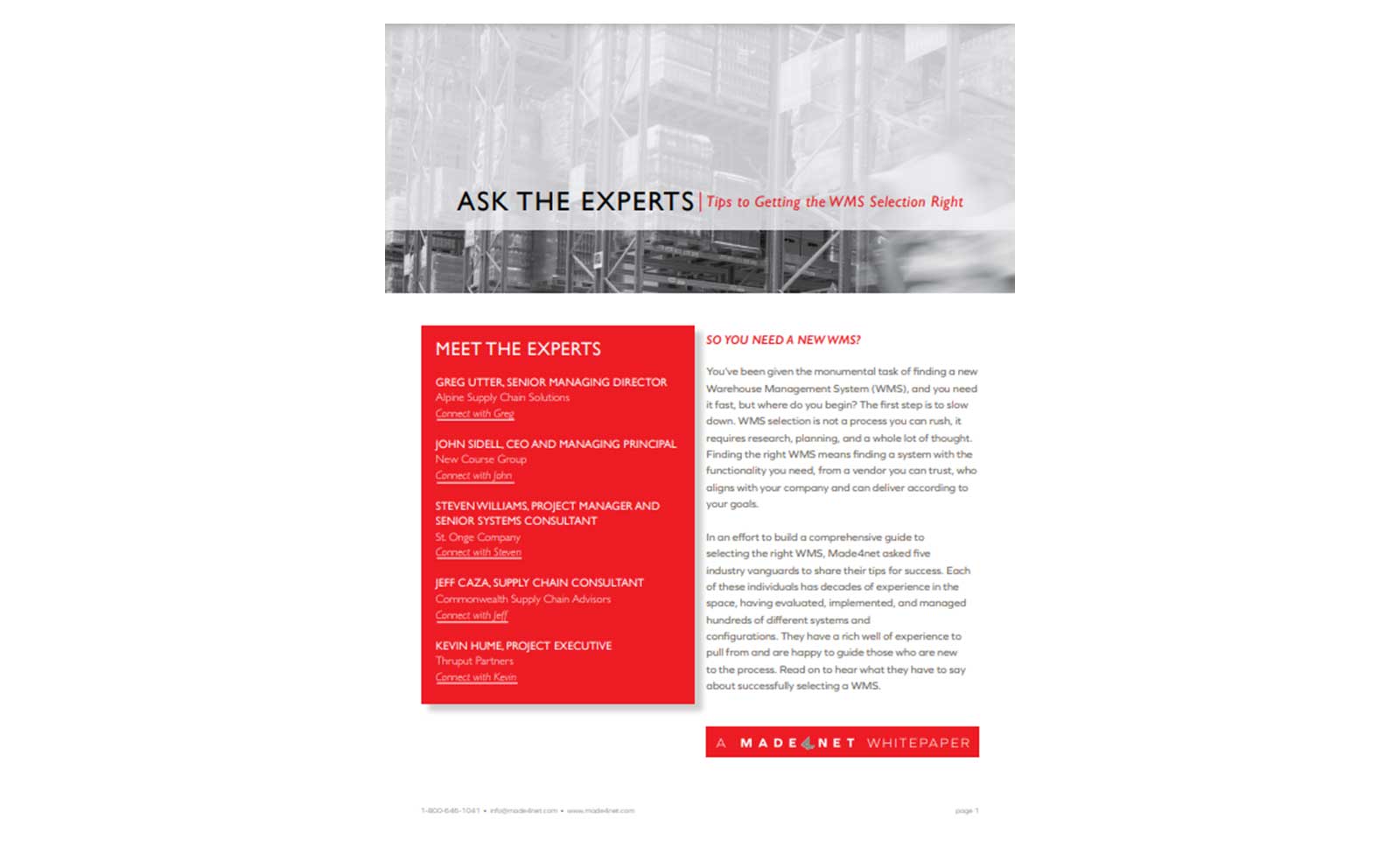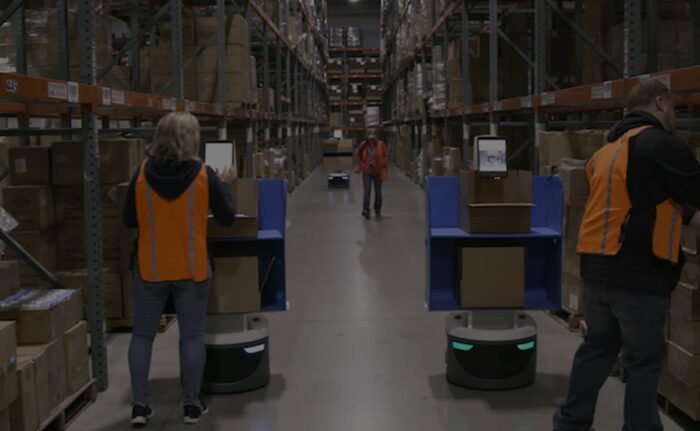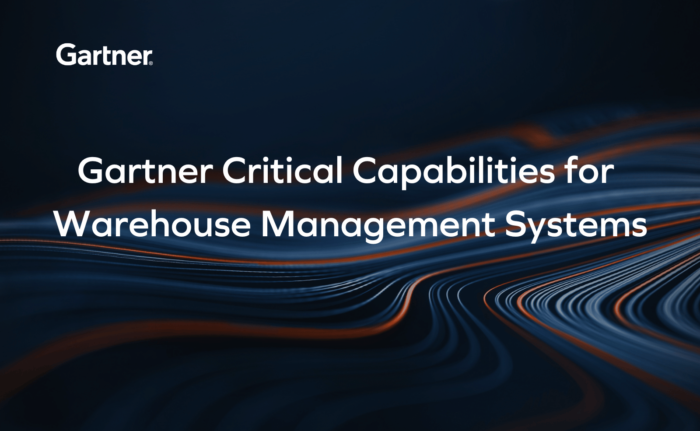
Modern fulfillment centers aren’t just warehouses—they’re operational engines powering customer satisfaction. To operate at scale, fulfillment centers need more than space. They need smart systems under the hood. That’s where fulfillment center software, such as a warehouse management system, comes into play: a unified platform that coordinates orders, inventory, labor, technology, and data into high‑velocity fulfillment.
In this article, we’ll cover:
- What is fulfillment center software?
- Why is fulfillment center software important?
- What are the different types of fulfillment centers? How do their software needs differ?
- What are common challenges for many fulfillment centers?
- What are key benefits of fulfillment center software?
- What are the key features of fulfillment center software?
- How to select the best fulfillment center software for your needs
What is Fulfillment Center Software?
Fulfillment center software is your digital command center. It integrates order intake, inventory management, picking, packing, shipping, returns, and analytics into one cohesive system. Think of it as the operational backbone, replacing paperwork and spreadsheets with real‑time workflows, connected systems, and automation that ensures accuracy and speed.
Why is Fulfillment Center Software Important?
Without an integrated system, fulfillment becomes error‑prone, disconnected, and unscalable. Software transforms order chaos into orchestrated flow: real‑time inventory tracking, optimized use of space and labor, automated carrier integration, and seamless returns handling—all while delivering transparency to customers and boosting service quality.
What are the Different Types of Fulfillment Centers? How Do Their Software Needs Differ?
Every operation will have a varied set of needs, which is one of the benefits of there being so many options when it comes to choosing fulfillment center software. Identifying the right system for you starts by understanding your operation and what it needs to stay ahead of the competition.
| Fulfillment Center Type | Software Needs |
| E‑commerce / Retail | Seamless channel integration, real‑time inventory, returns, and shipping |
| 3PL | Client portals, custom workflows, billing engines, and scalability |
| Wholesale Distribution | Large‑order batching, efficient replenishment, and vendor scheduling |
| Manufacturing | Serialized lot tracking, compliance, and automated ordering |
| Food & Beverage | Expiration date and shelf-life tracking, temperature control, lot traceability, and food safety compliance |
| Consumer Packaged Goods | High-volume order processing, demand forecasting, promotional inventory management, and fast replenishment |
What are Common Challenges For Fulfillment Centers?
Running a fulfillment center is no small feat. Between juggling inventory accuracy, meeting customer expectations, and keeping operations efficient, there’s a lot that can slow you down. Without the right tools in place, these challenges can quickly turn into costly setbacks.
Fulfillment Center Challenge #1: Inventory Control
When inventory data lives in silos—one system for e-commerce, another for wholesale, and a spreadsheet for overflow stock—you’re operating blind. Without real-time accuracy, you risk overselling products you don’t have, sitting on slow-moving stock, or scrambling to find misplaced SKUs. This creates stalled orders, missed SLAs, and unnecessary carrying costs. Modern fulfillment requires centralized, live inventory visibility across every channel and location.
Fulfillment Center Challenge #2: Order Accuracy
Mispicks, mislabeled parcels, and shipments that combine the wrong items don’t just cost you the replacement and return shipping; they chip away at your brand’s reputation. One error may be forgivable; repeated errors send customers looking elsewhere. Human error multiplies in high-volume environments, especially if pickers are working with paper lists or poorly designed mobile apps. Accuracy requires optimized picking paths, barcode scanning, and quality checks baked into the workflow.
Fulfillment Center Challenge #3: Scalability and Peak Season Spikes
Holiday sales, product drops, or promotional events can push order volumes to 3x–10x the norm. Manual processes or outdated software simply can’t handle the load, leading to bottlenecks, overtime costs, and missed ship dates. Without elastic systems and automation in place, every growth opportunity becomes an operational fire drill instead of a competitive win.
Fulfillment Center Challenge #4: Operational Inefficiency
Every extra step a picker takes or every double-handled carton is wasted motion that burns time and labor dollars. Poor warehouse layout, inefficient slotting, and underutilized automation compound into daily productivity losses. Over time, those minutes become hours, and those hours become thousands in lost capacity.
Fulfillment Center Challenge #5: Lack of Integration
Disconnected systems force teams into manual workarounds—exporting CSVs, emailing order files, or keying the same data into multiple platforms. This not only wastes time but also opens the door for errors. If your fulfillment software can’t natively talk to your e-commerce platform, ERP, WMS/TMS, and carrier systems, your “real-time” data is already out of date.
Fulfillment Center Challenge #6: Visibility and Control Issues
Especially for brands that outsource to 3PLs, lack of transparency can leave you guessing about inventory counts, order status, or where delays are occurring. Without dashboards and data feeds that give you true, real-time insight, you can’t make proactive decisions or communicate accurate delivery timelines to customers.
What are the Key Benefits of Fulfillment Center Software?
The right fulfillment center software doesn’t just solve problems—it unlocks new possibilities. From streamlining operations to boosting order accuracy and improving customer satisfaction, it can be the catalyst that takes your fulfillment game from good to exceptional.
Fulfillment Center Software Benefit #1: Greater efficiency and fewer errors
Automation handles the repetitive, rules-based tasks—like order routing, carrier selection, and inventory allocation—so your team can focus on exceptions and problem-solving. This reduces manual touchpoints, shortens cycle times, and lowers the risk of mis-ships.
Fulfillment Center Software Benefit #2: Real‑time visibility
Centralized, live data lets you see what’s in stock, where it’s located, and how orders are progressing; whether they’re in picking, packing, or out for delivery. This enables proactive management, faster customer updates, and tighter control over SLAs.
Fulfillment Center Software Benefit #3: Scalability
Cloud-native platforms scale with you, whether you’re adding new SKUs, onboarding additional sales channels, or expanding to multiple warehouses. They can handle volume spikes without adding headcount at the same rate as order growth.
Fulfillment Center Software Benefit #4: Cost control
Better labor allocation through task interleaving, optimized pick paths, and real-time workload balancing means you get more done with the same, or fewer, resources. Pair that with improved inventory accuracy, and you avoid unnecessary storage fees and write-offs.
Fulfillment Center Software Benefit #5: Customer satisfaction
Meeting (and exceeding) customer expectations for fast, accurate shipping builds loyalty. Fewer errors mean fewer returns, and real-time order status updates keep buyers informed, reducing “where’s my order?” inquiries.
Fulfillment Center Software Benefit #6: Return handling and flexibility
Integrated reverse logistics tools streamline RMAs, speed up restocking, and ensure returned items are quickly available for resale. Whether it’s a single-item return or a pallet from a wholesale customer, you can manage it all in one platform.
What are the Key Features of Fulfillment Center Software?
Not all fulfillment software is created equal. The best solutions are packed with features that go beyond the basics, helping you adapt to changing demands, scale with confidence, and deliver on every promise you make to your customers.
Fulfillment Center Software Feature #1: Cloud-based connectivity
Run your fulfillment operations from anywhere with a web browser or mobile app. Cloud-based systems remove the need for on-premise hardware, enable faster updates, and ensure teams in different locations are working from the same real-time data.
Fulfillment Center Software Feature #2: Real‑time inventory and order tracking
Automated syncing with your e-commerce store, marketplaces, and ERPs ensures your stock levels and order statuses are always accurate. This prevents overselling, stockouts, and customer frustration.
Fulfillment Center Software Feature #3: Barcode scanning and mobile picking
Handheld scanners or mobile devices help ensure every item is correctly picked and packed. This technology speeds up workflows, reduces training time for new employees, and dramatically cuts picking errors.
Fulfillment Center Software Feature #4: Multi-channel/core systems integration
Direct integrations with platforms like Shopify, Amazon, NetSuite, and major carriers allow orders to flow automatically into the system, with tracking info pushed back to customers. No more re-keying data or reconciling spreadsheets.
Fulfillment Center Software Feature #5: AI‑driven optimization
Machine learning algorithms can suggest better pick routes, optimize slotting for fastest retrieval, and even forecast labor needs based on order patterns, turning data into actionable efficiency.
Fulfillment Center Software Feature #6: Returns and reverse logistics management
Pre-built workflows for generating RMAs, printing return labels, and processing refunds cut down on back-and-forth with customers. This ensures returns don’t become an operational burden.
Fulfillment Center Software Feature #7: Reporting and analytics dashboard
Customizable dashboards track KPIs such as order cycle time, on-time shipping rate, error rate, and labor productivity. This allows managers to spot trends early, justify investments, and continuously improve processes.
How to Select the Best Fulfillment Center Software For Your Needs
When it comes to selecting the best fulfillment center software, the key is matching your operation’s unique needs—whether that’s multi-channel retail, food safety compliance, or high-volume CPG replenishment—with the right system capabilities. Don’t go it alone—tap into real-world insights with our ASK THE EXPERTS | Tips to Getting the WMS Selection Right white paper, designed to help you avoid common pitfalls and make confident, value-driven decisions.

Conclusion
Fulfillment center software isn’t an upgrade—it’s a transformation. It replaces transactional chaos with orchestrated precision: accurate inventory, faster delivery, scalable operations, and happier customers. Whether you’re a 3PL scaling clients or an omnichannel retailer managing millions in demand spikes, choosing the right software empowers you to turn complexity into control and run your fulfillment center as a competitive advantage.
Not sure what the right choice would be for your operation? Our experts are here to help. Let’s connect.


